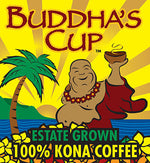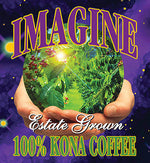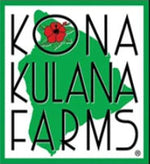As the second most popular beverage worldwide, tea is a staple in many people's daily diets. It's crucial to drink high-quality tea, which depends on the tea leaves you use.
At Buddha’s Cup, we prioritize the quality of your tea, so we've compiled key factors that influence its flavor and overall excellence.
The Importance of Drinking a High-Quality Tea
Full of vitamins and nutrients, high-quality tea is grown organically and treated with no pesticides or fertilizers, allowing you to experience the plant’s health benefits.
Additionally, tea has been around for thousands of years and is a sacred drink across many cultures. Traditional tea ceremonies don’t use low-quality tea so investing in high-quality tea lets you engage in the time-honored rituals.
6 Factors Influencing the Quality of Tea
Buddha’s Cup offers only the best in premium quality teas. Here, you’ll learn the six key elements to look out for in your all-time favorite beverage.
1: The Leaf's Crucial Role in Tea Quality

The key ingredient in traditional tea is the leaf, whose size and durability influence flavor, brewing time, and nutrient retention.
Whole tea leaves, often including the flavorful bud, can be brewed multiple times, each infusion releasing deeper flavors.
These leaves are less processed, preserving more antioxidants which are great for health.
In contrast, bagged tea, made from smaller pieces like fannings and dust, brews quicker but lose nutrients faster.
Whole-leaf teas not only offer richer flavors but also higher health benefits due to their minimal processing and shorter storage times.
2: Understanding Cultivars and Their Impact on Tea Quality

A cultivar is a plant variety selectively bred for specific traits. In tea plants, these traits include taste, aroma, or adaptability to different climates.
These cultivars are developed by propagating from top-performing tea plants, preserving their exact DNA. This allows for the selection of the highest-quality tea characteristics.
Cultivation of tea cultivars supports global growth in tea production, particularly as tea gains popularity worldwide. By developing plants that thrive in different altitudes and climates, the tea industry can expand into new regions.
The most common cultivar is the Japanese Yabukita, which is frost–resistant and produces a high yield. Yabukita has a strong flavor used for matcha.
You Might Like: How to Make Homemade Black Tea?
Source: Science Direct
3: The Critical Timing of Tea Harvest Influences on Quality

Harvesting tea leaves at the right time will give drinkers the most in flavor and quality. But when is the right time? That depends on the variety of tea, location, and climate.
Let’s break it down:
- Green tea is harvested in the spring, using tender leaves for its delicate flavor.
- White tea is also picked in the spring, crafted from young buds and leaves.
- Oolong tea is harvested in spring and fall, offering a lighter taste with spring and a more mature flavor in fall.
- Black tea is gathered in summer or fall, using mature leaves for its robust flavor.
4: Tea Farm Location

Tea quality varies by region, but every region is capable of producing high-quality tea.
The soil composition, altitude, and climate contribute to a tea's characteristics, with certain regions being more suitable for specific varieties.
Areas with rich soil composition, abundant in minerals, can develop leaves with higher nutrient content and distinct flavors.
Teas grown at high altitudes tend to develop slowly, giving a more complex flavor profile, richer nutrients, and enhanced sweetness.
Regional Teas
Here are some region-specific teas:
- Matcha is grown in the Uji and Kyoto regions of Japan. These regions have volcanic soil and the plant undergoes a unique cultivation process, creating the signature matcha umami flavor, intense green color, and creamy texture.
- Darjeeling, an Indian tea, is grown in the foothills of the Himalayan mountains, creating a strong and spicy flavor.
- Assam is also an Indian tea, grown in a more tropical climate with tons of rainfall, creating a fruity taste.
5: Growing Philosophies and Practices

When buying tea, consider the farming conditions at its origin.
The tea industry's growth can lead to exploitation, hurting local communities. Choose ethically produced, high-quality tea from regions committed to voluntary sustainability practices (VSSs).
These regions include:
- Kenya, where VSSs provide farmers with international markets, fair wages, and funds that can be put back into the community to fix roads and other infrastructure.
- India, where VSSs provide adequate training, maternity and gender-specific policies, and equal pay. They also helped legally improve working and living conditions.
- Sri Lanka, where climate-smart agricultural practices were implemented and tea farmers were educated on sustainable farming.
Pesticides and their effects
Tea plants are vulnerable to pests and disease, but heavy use of pesticides often leaves residues. These chemical treatments can compromise quality, safety, and reduce the health benefits of tea's natural nutrients.
Look for teas treated with fewer pesticides, like whole-leaf teas.
Sources: International Institute for Sustainable Development, Science Direct
6: Proper Tea Packaging for Sustaining Freshness and Quality

Exposure to air, light, and moisture can degrade the quality of tea, affecting its flavor, taste, and nutritional benefits. That's why it's essential to choose tea that is properly packaged.
Your tea should come in high-quality packaging, such as:
- Foil-lined packages
- Air-tight containers
- Vacuum-sealed bags
- Resealable bags
- UV-resistant bags
At Buddha’s Cup, we make sure our tea arrives at your doorstep as fresh as possible. Enjoy high-quality tea today.
Source: Springer Link
Make the Highest Quality Tea
Determining tea quality depends on the leaf quality, cultivars, timing, packaging, and location of harvest, as well as ethical and sustainable practices.
All of these factors play a role in the creation of tasty, high-quality tea with a complex flavor profile. Consider these when determining what tea to buy, carefully exploring each product and what may affect their quality.
Our Buddha’s Cup family produces High Mountain Grown 100% Kona Coffee and Tea on the Big Island of Hawaii. Contact us today.
FAQs
Why is drinking high-quality tea important?
Drinking high-quality teas will enhance the overall experience, ensuring optimal taste, aroma, and health benefits.
What are the key factors influencing the quality of tea?
The key factors influencing the quality of tea are leaf quality, cultivars, timing, location of harvest, growing practices, and packaging.
What are the health benefits of drinking high-quality teas?
Tea leaves are full of antioxidants, vitamins, and nutrients that help boost the immune system, aid digestion, and improve mental health.













